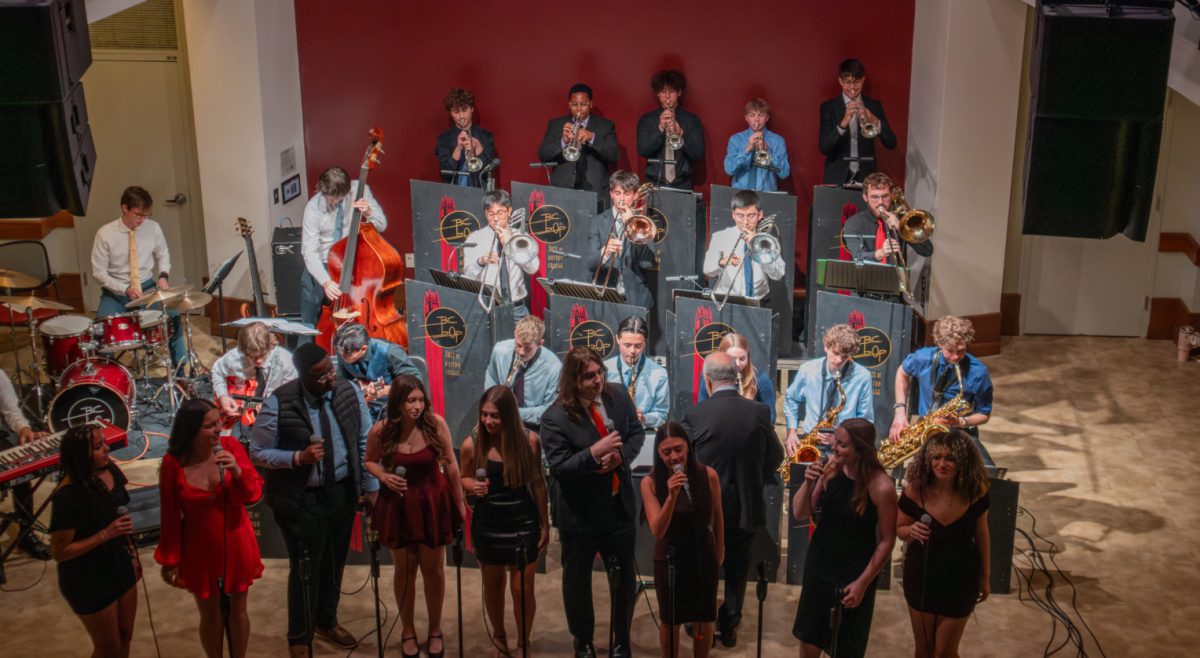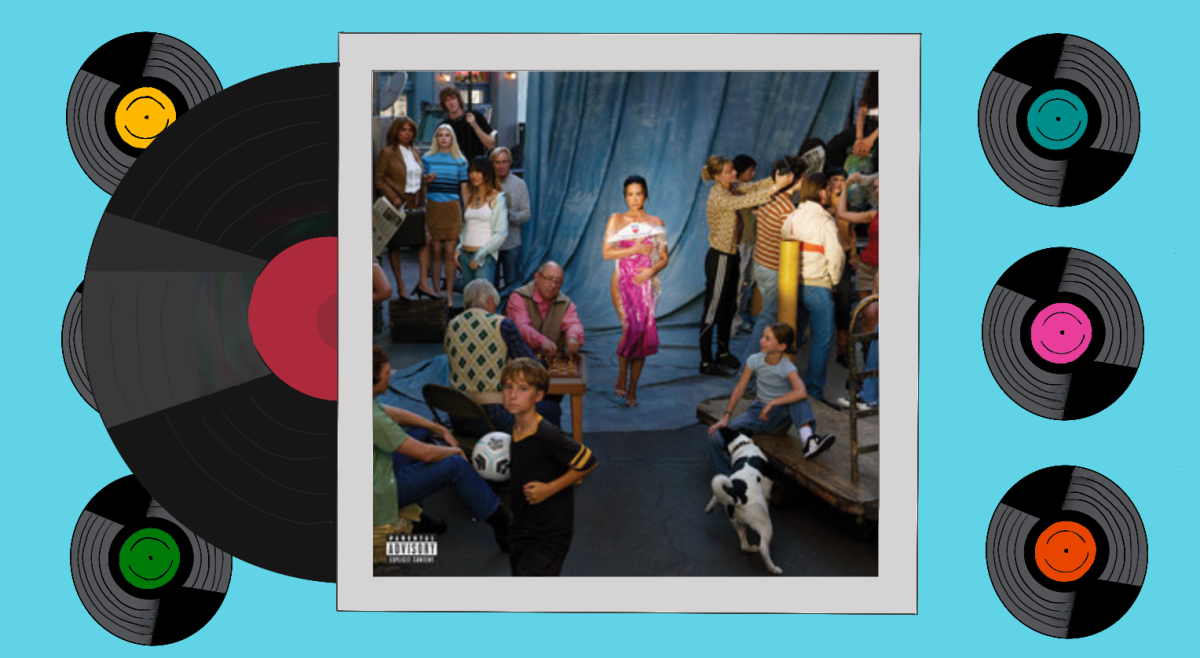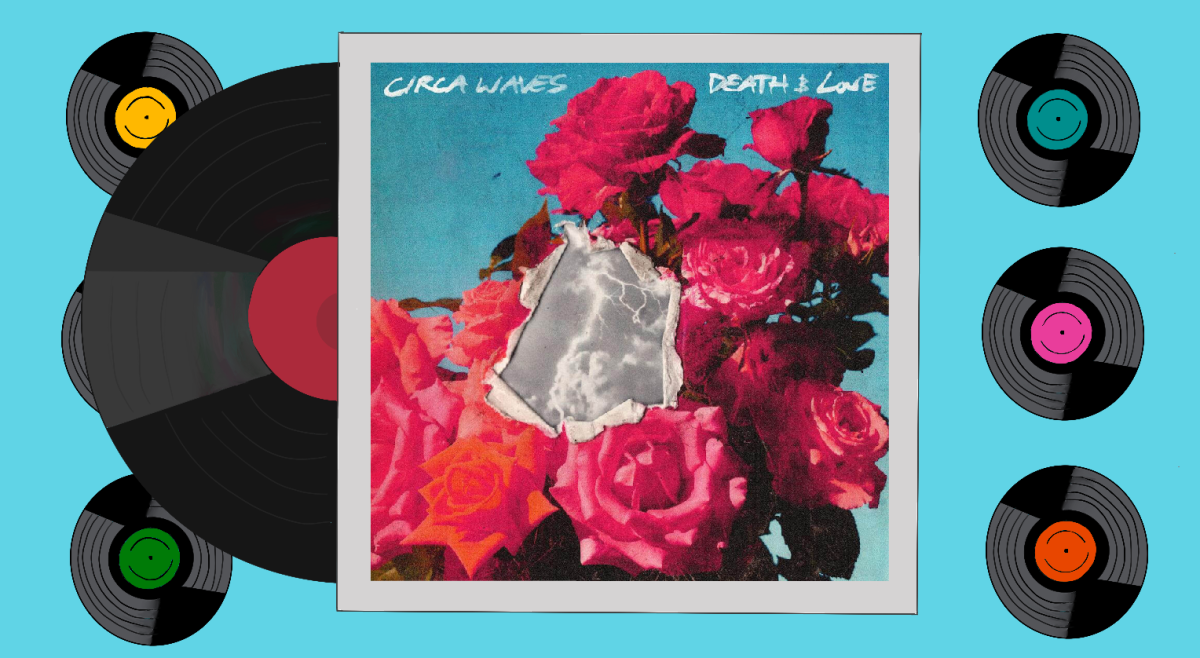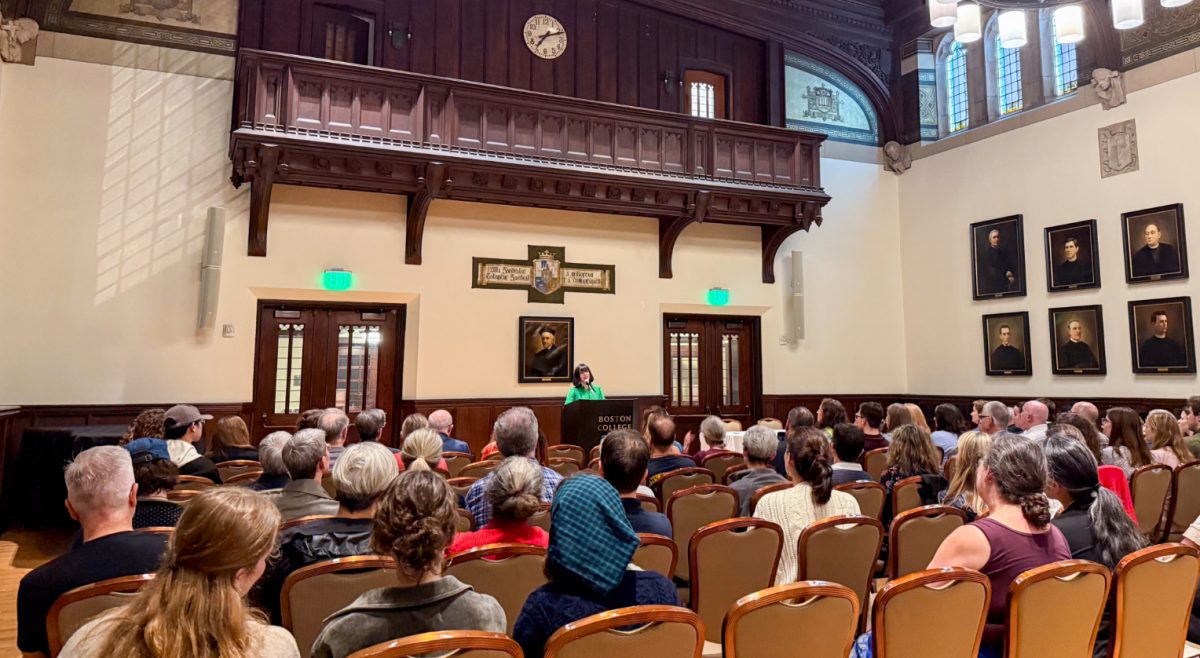By John Wiley, Ariana Igneri, and Michelle Tomassi
Stage manager Kim Fuller, A&S ’14, looked out to a packed Bonn Theatre Tuesday night. “We sold out the dress rehearsal,” she said. Opening to a full audience in the smaller performance space-which accommodates approximately 70 people-isn’t unusual in itself. In the case of For Colored Girls Who Have Considered Suicide When the Rainbow is Enuf, however, the Theatre Department had actually made arrangements to accommodate the bigger crowd. Two performances of the show were added to the schedule, and all six showings still sold out before 8 a.m. Monday. The production team then opened up the dress rehearsal to family and friends who couldn’t get tickets, only to discover that the Tuesday night performance quickly filled, as well.
“It’s just so different for BC-the school’s never done a play like this,” said Medina Geyer, A&S ’16, who plays Lady in Aqua in the show.
BLOG: Meet The Cast Of ‘For Colored Girls’
For Colored Girlsis a choreopoem written by American playwright Ntozake Shange, was first performed in a California woman’s bar in 1975, and later opened on Broadway in 1976. John Houchin, an associate professor within the theatre department and the director of the BC production, was joined by guest artist Robbie McCauley, who was part of For Colored Girls’Broadway cast. McCauley, the Monan professor in theatre arts at Boston College this semester, served as a dramaturg and acting teacher in the BC production of For Colored Girls, partnering with Houchin who has personally done extensive research on Black theatre.
“In her poems, Ntozake Shange told the story of black women who face the struggle to engage their lives as fully realized persons,” Houchin said in the production’s press release. “Almost 40 years later, this cast of Boston College women is giving their interpretation of how this poet’s voice speaks to them.”
For Colored Girlsopened in Bonn Theatre Wednesday night and runs through Sunday-the show is performed by an eight-woman cast.
“Shows like this are sorely needed in the theatre department,” said cast member Monica Wright, A&S ’14, who has appeared previously in the BC productions of Reefer Madness, Spring Awakening, and Avenue Q. “Even if they don’t specifically cater to one minority group or another, I think it would be great if they included shows with maybe more characters of color, or open up to not just the theatre community, but to everybody who might be interested.”
“This is history being made, and I want to be in some textbooks,” said Toluwase Oladapo, A&S ’16, who was similarly excited by the possibility of shows like For Colored Girlscoming to BC.
Raven Tillman, LSOE ’14, also sees the show as an opportunity to ignite conversations about race on campus, and how it plays a role in today’s society.
“There is definitely a lack of racial dialogue on campus, and further so a lack of the intersections of race and gender as far as a dialogue on campus,” she said. “I think seeing this production will shed light on that, and I really hope people will become empathetic toward the stories that weren’t just happening when this piece was written-they’re happening today.”
At the beginning of the production, the eight actors were encouraged to share personal experiences in a story circle. Virtually strangers, they were suddenly discussing race and identity in a very intimate setting. “When is the first time that you learned that you were black?” McCauley asked the cast.
While others answered with stories of identity and racism from their childhoods, Ashlie Pruitt, A&S ’15, who plays Lady in Blue in the production, gave a far more recent account.
“Mine was when I came to BC,” said Pruitt. “Of course, I knew I was black, but coming to BC and coming from a very diverse neighborhood and high school was a huge culture shock. I felt very uncomfortable-put out of my comfort zone. I realized being black is actually a thing, and not only something I should be proud of and acknowledge, but also look into, and investigate, and truly understand what it is to be black in America and at BC.”
Listening to the responses, Oladapo noticed that no matter where each person came from, these experiences involved a sense of shared racial identity. “The black story is honestly one story when it comes to America,” she said.
Traditionally, the 20 poems in For Colored Girlsoutline the experiences of seven women-in BC’s production, this number was brought to eight. While centered on the theme of self-love, the show addresses many unsavory dimensions of the American experience, including domestic violence, rape, suicide, and abortion.
“It has its old school aspects, but the content and the issues presented in the play are definitely relatable and applicable to lives today, the lives of black women-young black women, even today,” Pruitt said.
Despite the show’s historical connections, Georgia native Ashley Branch, A&S ’14-who plays Lady in Orange in the show-asserts that For Colored Girlsis more universally resonant than the title might suggest, with themes concentric with the struggles of all types of crowds, regardless of race or gender.
“Throughout the play, you deal with other, smaller themes that I feel like everyone is able to identify with,” said Branch. “Heartbreak, being betrayed, someone walking off with your identity-those are just a few of them.”
BC’s production of For Colored Girlsis unusual in that it has included an international voice in the conversation of race in America. As an exchange student from the UK, Kate Henry, A&S ’14, was looking for a way to make connections with other members of the BC community and was able to find an extended support network with the cast of For Colored Girls.
“I feel like I’m really part of the black community, which is really nice,” she said. “In terms of the content of the play, I’ve had to think a lot about the issues-they’re issues of race, domestic abuse, infidelity. It’s really nice grappling with those issues that are faced by a lot of women.”
Henry’s first monologue deals generally with perceptions of black women, and she was able to connect these themes to a talk she attended at BC that discussed how the media visualizes women. Black women, she explained, are especially portrayed as animalistic and overly sexual, and her segment of the play addresses those issues as well.
Henry also discussed working with McCauley and the values of working with a professor and highly experienced actor. “I didn’t quite understand quite how experienced she was, but she’s played every role in the play, so she’s got that breadth of knowledge behind her,” Henry said. “She was able to offer insights into how we should get in touch with our own experience to get into those of the characters.”
Exploring challenging subjects, from abortion to rape, the play required the cast members to reach deep down and channel the emotions of their characters.
“One of the biggest themes in the play is an unspoken struggle,” said Sydney McNeal, A&S ’15. “I think that a lot of times [the AHANA community] isn’t given the opportunity to speak for itself, and I think that’s what’s so important-in a place where cultural appropriation can really be prevalent, we are speaking for ourselves.
“It is a performance, but it’s also very, very real for all of us,” McNeal said.
Oladapo believes that the structure of the play as a series of poems demands the honesty of the actors. “I think it’s powerful because you don’t have anything to distract you-it’s straight to the point,” she said. “You’re not thinking about ‘oh this guy is so fine,’ or you’re not thinking about her outfit. Sometimes in a dialogue, you can get lost in it, but when I’m telling you straight up, ‘Somebody raped me’ or ‘I got an abortion,’ that’s powerful. It’s right in your face, and it’s to the point. The stuff we’re talking about is very powerful, and it would almost be somewhat comedic if we tried to act it out.”
“These are difficult topics,” Branch said. “You have to work very actively to feel those things in order to deliver those lines, but not to become consumed by the emotions that you have to allow yourself to feel.”
For Branch, these poems can’t be taken in isolation-being a part of the show means bringing Lady in Orange’s monologue into a conversation with her own struggles. “I learned that it’s okay to cry,” she said. “It’s okay to be angry,” she said. “It’s not easy to deal with, but it’s something that’s necessary.”
The cast of eight, encouraged from the production’s start to be uncommonly open with each other, eventually found solidarity in Shange’s words, growing necessarily close during a process which demanded they work together to confront some bigger issues. McNeal commented on this sense of unity and the common themes that can arise from such diverse situations.
“As cliche as it sounds, we’re all like the rainbow with different colors, but then, at the end of the day, we present one message,” she said.












